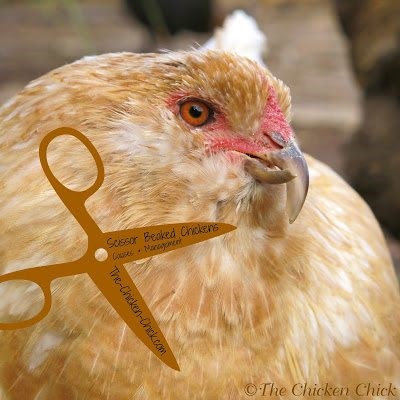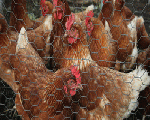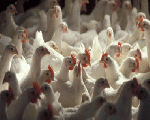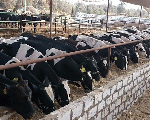What's after spawning.?

2023-08-30 14:24:28
(Source: English magazine "poultry" Chickens)) - June 2021 issue:
Prepare yourself for common Chick problems before they arise...
Nothing compares to the feeling that comes to you when you look into the nursery, and you see the first point of the Chick's exit from the egg. After 21 days of care, the chicks are about to come into the world.You can take a second to relax after being assured that you did everything right to make the eggs hatch; but there are several reasons to be vigilant, and stay tuned on your toes!
You know that you will need to keep the chicks fed, warm, and safe as they grow.But even the most diligent chicken breeders may have some problems with newly hatched chicks; keep this checklist of common Chick diseases handy when your eggs are about to hatch, and you'll be ready for any problems that may arise.
* Respiratory diseases:
Your chicks run, eat, drink and look healthy, but you may notice that one of them looks calmer, breathing with its beak open.And if you look closely, you may notice that the chick has a runny eye, and if you check the observation long enough, you may hear a cough or sneeze from the Chick.
So can chicks catch a cold
Respiratory problems are one of the most common problems, which you can see after hatching chicks, and just like the common cold, your chicks can experience symptoms ranging from runny nose, coughing, clicking when breathing, lethargy, and swollen eyes.If your chicks are suffering from what appears to be a cold,the first step to take is to check the conditions in the ward,the problem may be caused by any of the following factors:
* First:the mattress:
Dust can accumulate in the chicks 'mattress, irritating the chicks' respiratory tract.If you use sand, rice flakes, or sawdust for the mattress, you should make a quick replacement of them.Pine chips, or newspaper shavings are less irritating to the respiratory system of chicks.And changing the mattress may reduce the symptoms in the chicks.
* Secondly: problems with housing chicks:
Keep the Amber clean.And to keep the chicks healthy, you will need to clean your anvil daily.One of the mistakes that occur is the use of harmful chemical cleaning solutions, which can mix with ammonia in chicken droppings, creating a toxic atmosphere for chicks, so instead it is preferable to clean the amber with vinegar and water.
* Third: avoid the presence of moisture or wetness:

Make sure the chicken feathers stay dry to avoid respiratory diseases.
Be up to date on the humidity conditions of the dormitory, chicks are like small children, they can quickly turn over water dishes, make a mess in a clean dormitory.If the chicks pour water frequently, it is possible that the mattress will get wet, become damp, and a wet mattress can cause respiratory diseases.Always keep the mulch or bedding placed under the chicks dry, and if the chicks empty their water frequently, switch to using nipple-type waterers for drinking poultry instead of using water troughs.
If you removed all possible irritants of the respiratory system of the chicks from the amber, and yet two chicks remained sick, and the other chicks showed signs of illness, then your Amber may have a more serious respiratory illness, at this stage, you should contact the veterinarian to help you take steps to find out the nature of the disease.
* The back of the chicks looks sticky blue:
The butt stuck to the chicks ' feces, that's exactly what it looks like.The accumulation of fecal matter above the Chick's anus leads to the adhesion of feces to it, and the formation of a kind of stopper, and this stopper will prevent the chick from defecating normally.When the chicks are unable to get rid of their droppings, they retreat from this, which can lead to the flow of toxins through their bodies if left without intervention, and this condition may lead to the death of the chicks.
There are quite a few reasons why the condition of the chicks develops into a pasty ass.Stress, lack of space for chicks, crowding, cold or very hot conditions can cause this problem. And the key to helping the chicks stay healthy is to quickly detect the problem and remove the lump in the Chick's ass before the disease appears.And you can remove the fecal plug accumulated over the Chick's anus yourself. Put on rubber gloves, gently running warm water on them.Once the tampon has softened, try to gently pry it off using a soft cloth, cotton ball, or paper towel.
After removing the stopper, you can use the low speed in the hair dryer to dry the pasty anal area, if it looks red, and painful for the Chick, moisten it with a substance such as petroleum jelly to prevent further accumulation of feces on it, and the occurrence of molting of the Chick.And it is possible that the condition of the pasty ass of the same chick can occur again and again, so watch for chicks suffering from this condition, and treat it immediately.
* Diverging(flattened)legs:
The condition of the diverging stems is of concern to all chicken breeders.The chick may hatch, not be able to get up, remain lying flat on his stomach, legs stretched out in a spaced, separated position, he will not be able to stand on his own, he will not be able to reach food and water.
Temperature fluctuations in the nursery during hatching can cause this condition, it can also occur when the chick grows in a position that injures the tendons of its feet or legs, and the slippery floor of the nursery can also be the culprit. Whatever the reason for the Chick's diverging legs, she will need intervention to help her recover.
There are many different ways to treat the condition of diverging legs.And some recommend using a portion of the lollipop stick or adding a small bandage to each leg to enable the chick to get support.You will need to check the chick with this condition frequently, and change the bandage every day to make sure she can withstand the weight. And you will also need to make sure that the Chick eats, drinks properly so that he can move normally.

* Scissor beak phenomenon:
It is in them that the Chick's beak looks in a cross-shaped, scissor-like shape, and this condition is not a common condition in chicks, but it is possible that the condition of the scissor beak appears after hatching, or when the chick grows up.It will look as if the two constituent parts of the Chick's beak are not properly leveled under each other, creating a scissor-like appearance.This condition may be caused by the presence of inappropriate temperatures in the spawning nursery, the condition in which the chick had to be laid in the egg, or by a genetic defect, and you will probably never know why the chick has a scissor beak, and there is no cure for this condition.
It is possible that a chick with a scissor beak will live a happy, healthy life, but you will have to make some adjustments to the way it eats and drinks, monitor its growth.It will entail placing the feed in a deep bowl, a basin and not laying it out in a thin layer in a flat vase.The chick will learn to use its beak as a kind of shovel, to dig into the feed trough and take food out of it, and chicks with a scissor beak will also be easier for her to drink water if you use waterers with nipples instead of troughs.
* Yolk sac infection:
It is also known as(soft Chick) disease, which is one of the common causes of death of chicks.It is believed that the disease arises due to a bacterial infection during the incubation period.Bacteria can enter the egg due to unclean incubation, unclean thermometers, or poor hand washing before checking the fertility of the egg in the light.Yolk sac infection is one of the reasons why it is very important to take care of the hygiene of the nursery and sterilize it before laying eggs inside, and always wear rubber gloves when examining eggs.
The yolk sac infection manifests itself as a lump outside the Chick's body, and this lump is the unabsorbed yolk of the egg. And the chick needs to suck the yolk for normal development, and because he could not suck it before hatching, he will be more susceptible to disease, he may be smaller, weaker than other chicks.
Unfortunately, the available options are limited to waiting and monitoring the condition of chicks infected with this infection, as most of them will die within 24 hours of hatching.And if the Chick manages to live longer, then he may be sick, more susceptible to various diseases as he gets older.
* Sudden death disease:
If your chicks have all hatched, and they all look healthy, and eat and drink happily, and correctly, then why does death happen to some of them suddenly!.The sudden death of chicks can occur for several reasons as follows:
* Crowding due to feeling cold:
Chicks tend to huddle to feel warm, and when observing them, you will find that they huddle in the place located under or near the heating lamp.If the Amber is not warm enough, the chicks may huddle in one place, and this crowding for warmth can lead to any young chicks suffocating under the piled chicks.So make sure that the amber heat is enough so that the chicks do not gather and huddle in one corner.
* Dehydration:
When a brood hen raises her chicks, she will keep them warm and protect them, know how to eat and drink.As for the breeder, he hatches his own chicks, they hatch in the industrial nursery, and he raises them in a dormitory; then he acts as the mother hen for these chicks, and he will need to teach them to drink by dipping their beaks in water, and show them how to eat by tapping their beaks in the food bowl.Otherwise, you may find that the chicks suddenly die from dehydration.
* Coccidia:
Coccidiosis infection arises due to infection with the coccidia bacteria parasite that grows in warm and humid conditions.The coccidiosis microbe lives in the intestinal tract of the chicks, it can easily spread from one chick to another if the bedding is wet or the drinking water is contaminated with feces.Chicks infected with coccidiosis may look tired, thin and will be reluctant to eat or drink.Coccidiosis can be treated by adding an antibiotic to drinking water, but if left unattended, it can spread, leading to the death of some or all of your chicks.
* Looking to the stars:
When observing newly hatched chicks, it is sometimes noticed that there is a chick that does not seem to raise its head, perhaps rolls over backwards, or hangs flabbily to one side.And the chick may also seem to be walking backwards.This condition is known as stargazing, and may be caused by Vitamin B1 deficiency or thiamine deficiency.
And while it may be annoying to see such a chick in amber, the condition of (stargazing)can be cured with appropriate intervention, by finding out about the chicks ' deficiency in multivitamins or brewer's yeast, and adding these deficient vitamins to the BlackBerry.And you will spray any of these additives on the feed provided to your chicks to add thiamine.And if the condition was detected early and was caused by a lack of thiamine, then the addition of this vitamin should lead to getting rid of the state of the starry-eyed Chick.
In conclusion, it should be emphasized that good preparation is the key to the success rate when hatching eggs, which is also the key to success in raising chicks.A good knowledge of what can happen after hatching will help you monitor the young chicks,and this can thus help them grow into healthy chickens and Roosters
الموضوعات المشابهه

The use of dietary nucleotides in poultry

The poultry industry between the challenges of

Tips for broiler breeders to deal with

Diseases (infectious Bursa diseases)

Inflammation of the navel in chicks

Manufacturing a domestic product that competes with

Some common diseases in poultry

Important information about poultry diseases

What's after spawning.?

26 cattle and 1400 chickens died in

Agriculture receives an official delegation from the

The minister of Agriculture announces the release

Comments
Add comment